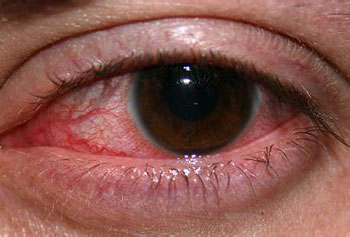By Linda Hardy, LDO-GA, CPOT, COA
It’s that time of year for a huge increase in vacationers. Many people will be heading to the beach and to other outdoor activities. One of the biggest concerns while enjoying the outdoors is preventing sunburn. The first thought is protecting your skin with diverse types of sunscreen, but not many people realize that your eyes can get sunburn just like your skin. This is a temporary, but painful condition that can be prevented with a little preparation.
Photokeratitis is having sunburned eyes. It is a painful condition that can happen when your eyes are exposed to ultraviolet rays (UV). UV rays are invisible rays of energy from the sun or even from man-made sources. There are many symptoms of photokeratitis: Pain, photophobia (sensitivity to light), redness, blurry vision, extreme tearing, twitching eyelids, foreign body sensation or gritty feeling eyes, swelling of the conjunctiva and skin around the eyes, and it can cause headaches, temporary changes in color vision, and temporary loss or distortion of vision.
To diagnose photokeratitis, a numbing drop is placed in the eye along with fluorescein (an orange dye, commonly used in microscopy, with a yellowish-green fluorescence used as an indicator and tracer). This enables the patient to remain still for examination. It also allows the doctor to examine the surface of the cornea. Typically, there will be abnormal stippling of the corneal epithelium that stains when the fluorescein dye is administered.
Photokeratitis will usually go away on its own within a 2 to 5-day period. To help with the discomfort during this time, cold compresses are very soothing. Keep the eyes moist with artificial tears. If the patient wears contacts, they should discontinue them immediately and not use them again until the symptoms have completely gone away. Avoid exposure to the sun by staying indoors, using a wide brimmed hat, or large, well protecting sunglasses. Have the patient avoid rubbing their eyes. This could easily cause a bacterial infection, in which an ophthalmic antibiotic drop may be required. If swelling of the conjunctiva or cornea is increasing, an ophthalmic anti-inflammatory drop may be prescribed. Over the counter painkillers can be helpful, too.
There are many ways to help prevent photokeratitis. Sunglasses that are large enough to give a good area of coverage and wrap around the patient’s face provide the best protection. Large brimmed hats are helpful as well. In some instances, sunglasses and hats may not be practical, such as during swimming and sporting activities. Sunscreen may be necessary, but you will need to be careful in the application. The eyelids and periorbital areas are at elevated risk of basal cell carcinoma due to excessive sun exposure. The easiest, but toughest way to prevent photokeratitis is to limit the amount of time that a person spends in direct sunlight. Be aware of your limitations, and do not hesitate to find a sheltered area in which to enjoy yourself.
June 2018
Eyes/Optics














